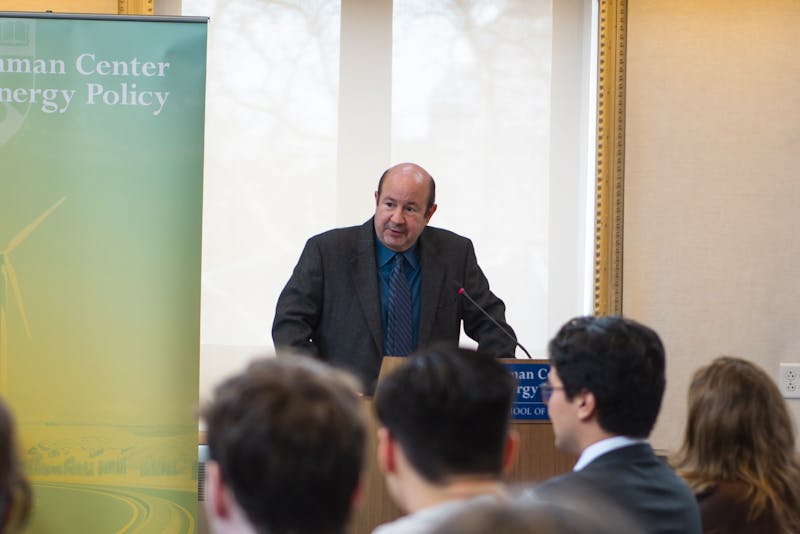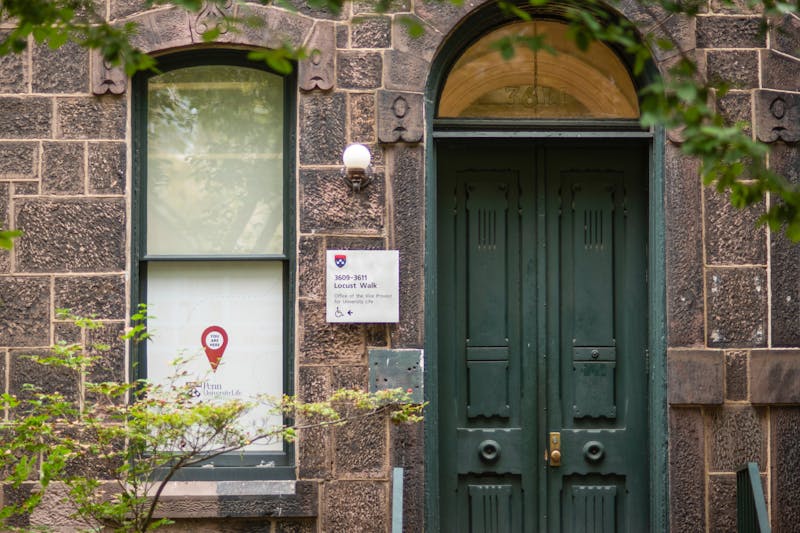
Approximately nine months ago, the University tried to put out the flame of college smokers by enacting a ban on smoking in on-campus housing.
Though cigarette butts still litter the high rise stairwells, others report that the transition to non-smoking residential life has been a fairly smooth one.
"I really thought [the ban] was going to be a bigger problem because it's kind of an abrupt shift to being OK with it if your roommate agrees with it to [no indoor smoking] at all," Residential Adviser and College junior Greg Meila said, adding that he has yet to come across any residents smoking.
Yet, Meila said that if need be, enforcement of the smoking ban could be difficult because it would pose a problem "that we haven't been given particular instruction on."
Some housing officials have already run into this situation.
Stouffer College House Dean Michele Grab recently sent an e-mail to the house listserv saying that residents have continued to smoke in their rooms in violation of the ban.
The methods of enforcement have been left to the individual college houses, and several house deans have yet to find sufficient ways to stop in-house smoking.
The initial establishment of the ban was a long process of debate among Student Health Service, the Undergraduate Assembly and several other advocate groups on Penn's campus, as Penn followed in a tradition of college campuses putting an end to smoking in residence halls.
In past years, Penn students were able to smoke in their dorm rooms as long as their roommates agreed. Yet, Penn and other colleges and universities began to see a danger of this policy.
According to the American Journal of Preventive Medicine, "Non-smokers are 40 percent less likely to become smokers if they live in smoke-free dorms."
As of March 2003, Harvard, Brown, Duke and Pennsylvania State universities, along with Wellesley and Smith colleges, all put a permanent end to smoking in dormitories.
Stanford University took this smoking ban several steps further, and has banned smoking throughout the entire campus, including in university buildings and residence halls, and at both indoor and outdoor events.
Creating the smoking ban at Penn proved to be a daunting task, as issues of infringement upon student rights came into the picture. Students and faculty alike have questioned the effectiveness of the ban over the past several months.
"The general dissent of the Undergraduate Assembly [to the smoking ban stemmed from] a violation of personal space" of students who smoke, College senior and UA Chairman Jason Levine said.
Levine explained that, while the UA feared it would impose upon students' rights to pass a bill for a smoking ban, the group ultimately voted for the ban as a result of the poor ventilation systems in college housing.
According to the American Society of Heating, Refrigerating and Air-Conditioning Engineers, "There are no filtration systems that eliminate all of the toxins in environmental tobacco smoke."
It takes more than three hours to remove 95 percent of the smoke from one cigarette from a room once smoking has ended, according to the society.
"Our college houses were not created with the necessary ventilation systems to keep cigarette smoke contained to solely smokers' rooms, and the University has no plans to redo the [ventilation systems] in the near future," College junior and University Council Steering Representative Rachel Fersh said.
"The only way [for] all students to exercise their right to healthy living" was to ban all college house smoking, she added.
Penn's chapter of the American Civil Liberties Union also fought in favor of the ban.
"The national ACLU concurs with the notion that people have personal liberty to choose to smoke, but that liberty ends when other people, through no choice of their own, are also affected. Secondhand smoke does this very thing," College senior and Penn ACLU president Michael Patterson said.
Due to the danger of secondhand smoke, Student Health Service supported the smoking ban.
"Data has shown if a student can be made seriously ill by an environmental situation, [the University] has the obligation to stop it," Student Health Service Director Evelyn Wiener said.
According to Wiener, a study conducted last spring by the Office of Health Education showed that up to 35 percent of Penn students have smoked at some point in their lives, and 3 percent of the entire student body -- which comprises 20,000 undergraduate and graduates students -- smokes every day.
This research proved discouraging for Student Health Service, and so by supporting the ban, Wiener and others hoped not only to protect non-smokers, but also to encourage smokers to quit the habit.
Wiener explains that on college campuses there are two situations which tend to increase student smoking -- party behavior and stress. Ultimately, these two factors combine to "spill into everyday behavior," Wiener said.
While forcing students to stop smoking is out of the question, Wiener hopes that the smoking ban will also serve as a mechanism to provide smokers with opportunities to receive help in ending their addiction.
However, until ventilation systems can be improved and medicine can find a way to relieve the world of the dangers of secondhand smoke, "the [UA] sees this [ban] as the only healthy, just way," according to Fersh.
The Daily Pennsylvanian is an independent, student-run newspaper. Please consider making a donation to support the coverage that shapes the University. Your generosity ensures a future of strong journalism at Penn.
DonatePlease note All comments are eligible for publication in The Daily Pennsylvanian.







